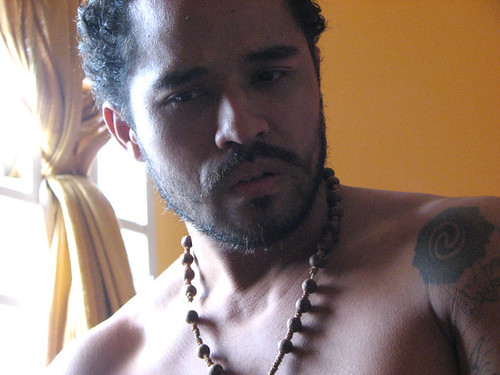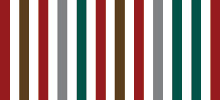By Nicholas Laughlin
26 June, 2009
Paramaribo's northern suburbs are orderly in their sprawl: streets laid out in a careful grid, neighbourhoods separated by drainage canals. The flat terrain with few large landmarks is confusing to visitors--even after several visits to this area I still feel like we're going round in circles--and apparently even taxi drivers can get lost.
Chris and I are fascinated and puzzled by this topography. In most Trinidadian suburbs, you can guess when the land was developed by the predominant architectural style of the houses, which subsequent renovations and remodellings can't completely disguise. But here there is a sense of the temporally haphazard. On a single street we see an old wooden house on stilts--what Chris calls a Guyana house--that could date back to the 1930s or 40s, right next to a 70s bungalow and a spanking new mini-mansion, then an empty lot overgrown with razor grass that to our sensibilities suggests "country".
After several wrong turns on the part of the taxi driver, we finally arrive at Pierre Bong A Jan's house, one of the new-looking ones, facing south onto a broad canal. Bong A Jan waves to us from an upper window, then comes down to escort us past a phalanx of excited big dogs. He is one of the younger artists we've met in Paramaribo, quiet and confident, with a scraggly beard, a necklace of wooden beads, and a series of blue-black tattoos on his left shoulder and upper arm.
Pierre Bong A Jan in his tattoo studio. Photo by Nicholas Laughlin
The house is neat, airy, tastefully furnished. A large canvas, perhaps six feet wide, is propped against the wall of the front hallway. It depicts a monstrous semi-human creature pouncing on a nubile young woman. The creature's shoulder emerges from the canvas as a piece of wood carving. It makes me think simultaneously of comic book illustration and a stylised Erté poster. The painting is one of a series, Bong A Jan explains, exploring a figure from Surinamese folklore: the bakru, a half-flesh, half-wood forest spirit which does the bidding of its obeahman master.
Bong A Jan takes us up a flight of stairs to a spacious, light-filled loft that runs the full length of the house. This is his main studio, with finished paintings arrayed along one side, pots full of paintbrushes, and an airbrush compressor next to a draftsman's table. He shows us another large painting of a nude young woman, floating against a geometrical background. Both her shoulders are covered with tattoo-like markings, which on closer inspection turn out to be clusters of faya lobi, or ixora flowers--the national flower of Suriname. Beside it is a painting of pairs of eyes glowing out of a deep blackness, like a dream of being lost in the bush at night.
Faya Lobi (2008), by Pierre Bong A Jan. Photo by Marieke Visser
His second studio is a much smaller space, tucked beneath the loft. This is where Bong A Jan works at his day-job: he is a tattoo artist. He shows us his equipment, the padded table where clients lie, and the gun-like tattoo machine. I ask him who did the tattoos on his own shoulder. He smiles. He did them himself, he says--that's why they're on one side only.
Chris asks to see some photos of his other tattoo work. Bong A Jan pulls up a slideshow on his laptop. Some of the images depict standard fare: pseudo-Celtic knots and the like. Others incorporate recognisably Surinamese visual elements, some derived from traditional Maroon carving. One spectacular large tattoo seems to combine Botticelli's Venus with a many-armed Hindu goddess. A few years ago, Bong A Jan tells us, most of his clients asked for standard images and forms you could pick out of any pattern book, but recently there's been more interest in imagery that speaks to a Surinamese identity.
We can see how Bong A Jan's work sets up a creative dialogue between these two media, painting and tattoos, at a meeting-point of conventional "fine" art and bodily adornment, folklore and science fiction, international youth culture and personal self-expression. How might we incorporate this dialogue into the wider conversation of Paramaribo SPAN? Bong A Jan wonders aloud whether he could build a temporary structure, part studio, part installation, and find someone willing to be tattooed in front of an audience--the tattoo as a performance, in multiple senses.
"It won't be me," Chris says, laughing.
Bong A Jan's painting studio. Photo by Nicholas Laughlin
Diary: meeting Pierre Bong A Jan
Thursday, October 1, 2009
Subscribe to:
Post Comments (Atom)






2 comments:
What's interesting is the diversity of artists working in Parbo. Not to mention the diversity of the ways they support themselves and their art as they move toward developing a genuinely autochthonous artistic vision.
Haha cool.. he's my cousin :)
(the guy you wrote about)
Post a Comment